






















































































 By Jan Lefebvre jan.l@star-pub.com
By Jan Lefebvre jan.l@star-pub.com

LITCHFIELD, Minn.
– Dave and Caroline Thomas came for the ribbon-cutting ceremony and stayed for shopping July 6 at Fieldgate Cheese Store’s launch in Litcheld. The store space had been closed for ve years but reopened with a new concept within an old tradition.
“We are so excited,” Caroline Thomas said. “We were sick when it closed. It’s a thrill to come back here.”

Thomas’ sentiments were similar to what the new store’s manager, Melissa Tangen, has been hearing the past 10 months as the store was reenvisioned and remodeled on its original site at First District Association’s location.
“Even though Fieldgate has not been on people’s tables necessarily for the past ve years, they have still held some really great brand loyalty to it because they still talk about it, and we still hear about it,” Tangen said. “Retailers are still inquiring about it, and that makes it all the more exciting.”
The Fieldgate store had existed for several decades before the business was sold to Forma Feed about 18 years ago – although First District


Association maintained ownership of the property. Forma-Feed Ag Services ran an ag supply-styled store but still sold Fieldgate cheese, pizzas and ice cream there.
“When Form-a-Feed closed, (the Fieldgate name) had about ve years where it wasn’t out there,” Tangen said. “When we decided to bring it back, we redid the logo – updated it, freshened it up a little bit for 2023. We’ve done something really good with this brand, and we are excited to bring it back and bring it back stronger.”
Tangen, who comes from dairy farming and has family who are farmer members of First District Association, remembers coming to the store while growing up. So does Josh Barka, dairy farmer and chairman of the board of directors for First District Association.


“It was almost like the ice cream truck for us when we came to the store to get ice cream, cheese and pizza here in town,” Barka said. “(The store) was a showcase of the quality of our products. Our producers were asking for a long time to have it come back. We (produced) this cheese, and then we couldn’t get access to it.”
First District Associa�on Chairman of the Board Josh Barka (from le�), store manager Melissa Tangen and CEO Bob Huffman were on hand July 6 for the relaunch of Fieldgate Cheese Store on the FDA site in Litcheld, Minnesota. A main goal for the store is to make Fieldgate products readily available to farm families and others in the surrounding area who play a part in the farmer-owned business’s success.
Once the original store closed, products from First District Association were only available in commercial bulk. First District Association CEO Bob Huffman said they wanted to make their products accessible to local consumers again. Huffman has been CEO since July 2019.
“The cheese that we produce in the plant is being packaged in 500-pound barrels or










40-pound blocks,” Huffman said. “That’s pretty hard to put on a kitchen table.”
The new store is offering the same Fieldgate cheeses of the past but has added different sizes and avors to its line. Customers can nd what Tangen calls “charcuterie-boardfriendly” 8-ounce squares of cheese in avors like bacon jalapeno and white cheddar cranberry, among others. There are
also Fieldgate cheese curds on the way soon.
“They are fresh, and they squeak when you eat them,” Huffman said. “That’s what’s very important with cheese curds.”
A �meline of First District Associa�on’s history is ready to greet customers July 6 before the doors opened that day for the relaunch of Fieldgate Cheese Store in Litcheld, Minnesota. The store offers a variety of dairy products, food and other iems.
The cheese sold in the store is enhanced, cut and wrapped by a rm in Wisconsin, but the cheese itself is made right at First District Association.
For other products in the store, First District Association has partnered with area businesses.
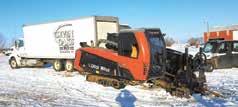
“Pretty much everything in the store is locally produced,” Huffman said.





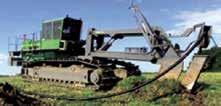
Stoney Creek Dairy of Melrose, a patron of First District Association, sells gallons of its milk there. Both Carlson Meat Shop of Grove City and Petty Brothers Meats of Annandale are supplying locally produced, high quality meats to the store. Sparboe Farms near Litcheld is providing eggs. There are other edible treats for sale by local makers such as popcorns and chocolates.
Besides having its baked goods for sale at the store, Cold Spring Bakery has made the site one of its delivery lo-
cations so that preorders of cakes and other baked items can be picked up by local residents instead of needing to travel 30 miles to Cold Spring.
The store also offers gift selections such as shirts, hats, toys, décor’ and kitchen items. For the holiday season, customized and ready-made gift boxes will be available for purchase. Customers can browse and order from the store’s website as well. The store even offers curbside pickup.
Store hours are Monday through Friday from 8 a.m. to 5:30 p.m. and Saturday from 8 a.m. to noon.

Tangen said staff aims to partner with businesses in other ways such as bringing Fieldgate cheese to wine stores or other retail shops for crosspromotional events or bringing in other
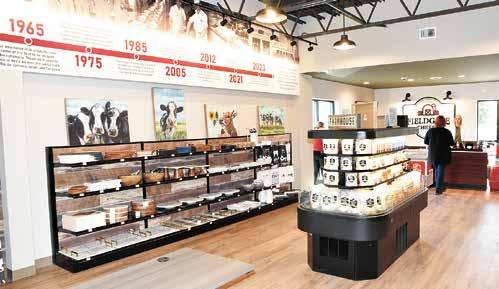

Turn to






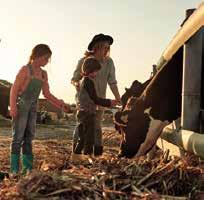
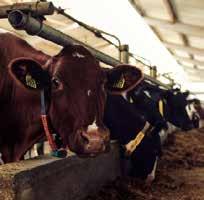


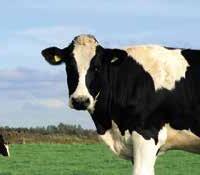
JAN LEFEBVRE/DAIRY
Fieldgate Cheese Store stands ready for its opening day July 6 at First District Associa�on’s plant site in Litcheld, Minnesota. The store that stood at the same site but closed ve years ago was remodeled to offer Fieldgate products and other foods and items to area farm families and residents as well as offer space for mee�ngs and other events.
businesses to the store for events.
“We all want to do well and thrive, and if we can to do that together, that’s the best way forward,” Tangen said.



Before the remodel, the store’s space was carefully thought out with the help of Rice Construction. The walls are dairy themed, and one wall has a timeline mural of First District Association’s history. Meeker County Farm Bureau donated a large whiteboard wall and other items for a kids area.
A meeting room with a large television not only can be used for meetings and gatherings, but there are plans to use it for classes on topics such as charcuterie board assembly. The space is also being considered
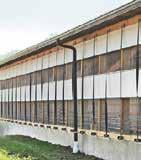
for school visits where students can learn from employees and farmers about how food goes from farm to table. The team envisions other community meetings and events happening there as well.
The Fieldgate label has been used on all cheese products produced at First District Association since 1985, no matter the type of the product or size of its packaging.
“Of the cheese that we produce, which is roughly 800,000 pounds a day out of our manufacturing plant, a large amount of it is domestic, roughly 60% to 70% in the specialty snack food sector with the remainder touching food service and other sectors of cheese,” Huffman said.

First District Association has also begun exporting cheese when production levels have warranted as the company has expanded, especially with the last expansion that allowed for processing 40-pound blocks of cheese in addition to the already-existing 500-pound barrels. The 40-pound blocks appeal to many international buyers.
However, the Fieldgate Cheese Store, Huffman said, allows for a different focus based on local values, community access and celebration of the roughly 650 farm-family owners of First District Association.

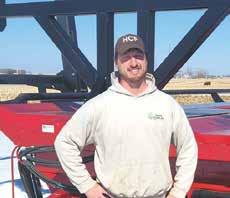

“Money is important – we’ve got to keep the lights on – but our focus is loyalty to our farmer-owners and their values,” Huffman said. “We put a focus on the history of our dairy farmers and the founders of First District Association and what has been built here over a hundred years. Our membership is proud of the plant they own, … and we felt we needed to bring back a store that represents the quality of what our plant produces.”
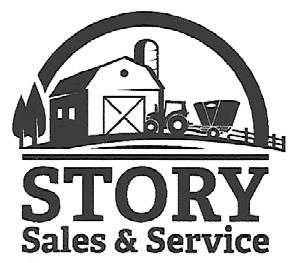
Barka agreed and said response to the store’s rebirth has been extremely positive.




“It’s a buzz, even among our producers, that cheese is back,” he said.



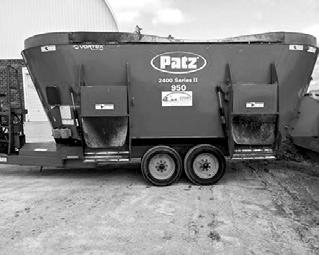

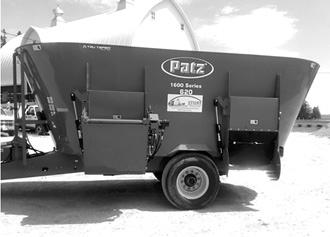
“Money is important – we’ve got to keep the lights on –but our focus is loyalty to our farmer-owners and their values. ... Our membership is proud of the plant they own, … and we felt we needed to bring back a store that represents the quality of what our plant produces.”
BOB HUFFMAN, FIRST DISTRICT ASSOCIATION CEO
STAR

The U.S. Department of Agriculture left its 2023 milk production forecast unchanged in its latest World Agricultural Supply and Demand Estimates report but lowered the 2024 estimate, citing lower cow inventories and slower growth in milk per cow.
2023 production and marketings were estimated at 228.4 and 227.4 billion pounds, respectively, unchanged on both from a month ago. If realized, both would be up 1.9 billion pounds, or 0.84%, from 2022.
2024 production and marketings were projected at 230.6 and 229.6 billion pounds, respectively, down 200 million pounds on both. If realized, 2024 production and marketings would be up 2.2 billion pounds, or 0.96%, from 2023.
Milk-fat basis exports for 2023 were lowered, primarily reecting lower butter and cheese shipments. Skim-solids basis exports, also lowered, reect lower exports of whey products as well as a number of other dairy products; however, these declines are partially offset by higher nonfat dry milk exports.
Milk-fat basis exports for 2024 were reduced as USDA expects weakness in butter sales to carry into the next year. Skim-solids basis export reductions were largely due to lower-expected lactose exports, according to the WASDE.
Imports on a milk-fat basis for 2023 were unchanged, largely offsetting changes for a number of products, but skim-solids imports were lowered on lower milk protein concentrates. Imports for 2024 on both a skim-solids basis and a milk-fat basis were lowered slightly.
Projected 2023 cheese, NDM and whey price averages were lowered from a month ago based on continued ample supplies of cheese and competition in international NDM and whey markets. Butter was unchanged.
The 2023 cheese average was lowered to $1.6750 per pound, down 5.50 cents from a month ago, and compares to $2.1122 in 2022 and $1.6755 in 2021. The 2023 average was lowered to $1.69, down 8.50 cents from last month’s estimate.
Butter was projected at $2.4350 for 2023, unchanged from last month’s estimate, and compares to $2.8665 in 2022 and $1.7325 in 2021. The 2024 average was raised to $2.3450, up a penny from a month ago.
NDM will average $1.17 per pound in 2023, down
20 cents from last month’s WASDE, and compares to $1.6851 in 2022 and $1.2693 in 2021. The 2024 average will fall to $1.1250, down 50 cents from last month’s estimate.
The Class III milk price forecast was reduced due to weaker cheese and whey prices, and the Class IV decline reects lower NDM prices. The 2023 Class III will average $16.05 per hundredweight, down 65 cents from last month’s estimate, and compares to $21.96 in 2022 and $17.08 in 2021. The 2024 average will fall to $15.95, down $1.05 from last month’s estimate.
The 2023 Class IV is expected to average $18.20 per cwt, down 15 cents from last month’s call, and compares to $24.47 in 2022 and $16.09 in 2021. The 2024 Class IV will average $17.45, unchanged from last month’s projection.
The U.S. corn outlook is for fractionally higher supplies and ending stocks. Corn beginning stocks were lowered 50 million bushels as greater feed and residual use more than offsets reductions in corn used for ethanol and exports. Corn production was forecast up 55 million bushels as greater planted and harvested area from the June 30 acreage report is partially offset by a 4-bushel reduction in yield to 177.5 bushels per acre. With supply rising fractionally and use unchanged, ending stocks are up 5 million bushels. The season-average farm price was unchanged at $4.80 per bushel.

Soybean production was projected at 4.3 billion bushels, down 210 million on lower harvested area. Harvested area, forecast at 83.5 million acres in the June 30 acreage report, was down 4 million from last month. The soybean yield forecast was unchanged at 52 bushels per acre. With lower production partly offset by higher beginning stocks, 2023-24 soybean supplies were reduced 185 million bushels. Soybean crush was reduced 10 million bushels, reecting a lower soybean meal domestic disappearance forecast.
Soybean exports were reduced 125 million bushels to 1.85 billion, based on lower U.S. supplies and lower global imports. The season-average soybean price was forecast at $12.40 per bushel, up 30 cents from last month. Soybean meal was projected at $375 per short ton, up $10.
Speaking in the July 17 Dairy Radio Now broadcast, StoneX broker Dave Kurzawski said USDA predicts a record yield on soybeans and increased ending stocks, which would benet dairy farmers buying feed, but cautions it’s still too early in the season as the crops



mature and deal with weather ahead.
He said there is light at the end of the milk-price tunnel. U.S. prices for cheese and powder especially are very competitive on the global stage. We’re in the rst half of the year, which traditionally sees milk output increase and inventories grow, but during the second half of the year, we make less milk and draw down those inventories. With nances being what they are, milk output could drop quickly, he said. He also expects better demand ahead, all which will strengthen prices, but he said, “It’s going to be a tough year for dairy farmers.”
The latest Crop Progress report shows 22% of U.S. corn crop was silking as of the week ending July 9, up from 8% the previous week, 8% ahead of a year ago and 1% ahead of the ve-year average. 55% of the corn was rated good to excellent, up from 51% the previous week, but down from 64% a year ago.
The report shows 39% of the soybeans were blooming, up from 24% the previous week, 9% ahead of a year ago and 4% ahead of the ve-year average. Ratings put 51% of the beans at good to excellent, up 1% from the previous week but 11% behind a year ago.
The week ending July 1 saw 59,300 dairy cows go to slaughter, up 2,800 head from the previous week and 7,500, or 14.5% more, than a year ago. Year-to-date, 1,620,700 cows have been culled, up 8,800 head, or 5.8%, from a year ago.
Cheese prices oscillated some the second week of July but moved higher. After gaining 5.75 cents the previous week, cheddar blocks climbed to $1.53 per pound Thursday, highest since May 24, but closed Friday at $1.48, up 8.75 cents on the week and 51.50 cents below a year ago when they dropped 11.50 cents to $1.9950.
The barrels climbed to $1.42 Tuesday, highest since June 26, lost 3 cents Wednesday, and nished Friday at $1.3925, 1.25 cents higher on the week, 67.75 cents below a year ago, and 8.75 cents below the blocks. CME sales for the week totaled 22 cars of block and 53 of barrel.
Midwestern cheesemakers report a continuance of hearty demand, said Dairy Market News. Retail cheddar-American style cheesemakers said customers have ramped up ordering, and plants are pushing capacity limits to meet customer needs. Barrel producers report similar notes. Any extra loads are moving, said
DMN, and concerns about warehouse space are noted, but some of that is based on cheese that requires more aging time. Milk remains available in the Upper Midwest, but the farther south you go, the tighter the milk. Spot prices continue at double-digits below Class III, but some have been reported at Class in the centralsouthern states. Contacts expect seasonal milk supply limitations to hamper upcoming production and potentially boost market prices, said DMN.
Western food service cheese demand is steady while retail is steady to moderate. Sources note strong cottage cheese and cream cheese sales thus far for the year. Manufacturers of frozen pizzas report less demand for third quarter than a year ago, which is negatively impacting mozzarella sales. Loads are available to meet demand with some reports of higher warehouse capacities. Class III milk is ample for strong for the vat. Export demand is mixed. Interest from Asian and Mexican purchasers is moderate, according to DMN.
Cash butter saw a Friday nish at $2.55 per pound, up 7 cents on the week, highest since Dec. 20, 2022, but still 38 cents below a year ago, on 45 sales.
Cream has begun its seasonal disappearing act in terms of affordability for churning, said DMN, and some expect limits on spot cream for the remaining summer months. Warmer temperatures are hampering milk output, in general, and southern plants are vying for more Upper Midwestern cream. That said, there are Upper Midwest butter plants reporting cream availability is not as tight. They point out that current cream access this late into summer is unique to 2023.
Cream is tighter in the southern areas of the West with California joining the triple-degree temperature club. Cream is available throughout the West and meeting manufacturers’ needs. Some relay that cream demand from ice cream makers is below last year’s levels but expect warmer weather to change that, while others expect Class II draws to decline further. Butter production is steady to lighter. Retail and food service butter demand is strong to steady though some report fourthquarter buying is comparatively lighter than third-quarter buying thus far.
Grade A nonfat dry milk fell to $1.0775 per pound Monday, lowest CME price since Nov. 9, 2020. It rallied to a Friday close at $1.1050, up 1.75 cents on the week but 55.50 cents below a year ago. Eleven loads exchanged hands on the week.
Analyst Jon Spainhour warned in the July 7 “Weekly Wire,” “Chinese participation is frightening. Previously, Southeast Asia seemed able to pick up the slack. However, it seems highly unlikely that they can absorb the full loss of Chinese demand. If they can’t, and, I repeat, it is unlikely they will, New Zealand will be forced to alter production schedules. That would put more skim milk powder into the market and likely push prices lower” and “could move to the $1-per-pound area. There will be a lot of trade that takes place at this highly psychological level, but I do think we can go there and possibly even move into the mid-90s.”
Dry whey continued to break records, in the wrong direction, falling to 22.50 cents per pound Wednesday, the lowest price ever, but it gained 1.75 cents Thursday, rst gain in eight sessions, and added a half-cent Friday to close at 24.75 cents per pound, up 2 cents on the week, highest since June 27, but 20.75 cents below a year ago. There were 48 CME sales reported on the week. Whey’s situation is very similar to powder with too much supply and too little demand.
Tuesday’s GDT Pulse saw just under 2.1 million pounds of Fonterra whole milk powder sold at $3,000 per metric ton, down $55 from the last GDT Pulse and down $85 from the July 4 GDT Pulse.

HighGround Dairy said, “Contract 2 regular WMP fell to the lowest price ever recorded on the Pulse Auction since it began in August 2022. This also marked the lowest C2 Regular WMP price on the GDT platform since November 2020 as weak demand continues to challenge global markets.”
In politics: “Slurries of highly processed ingredients are not equivalent to dairy,” said the National Milk Producers Federation, which is taking that truth to government and consumers.
NMPF listed the ingredients of a plant-based beverage in a press release this week: “Water, animal-free whey protein (from fermentation), sunower oil, sugar, less than 1% of: vitamin A, vitamin B12 (cyanocobalamin), vitamin D2, riboavin, citrus ber, salt, dipotassium phosphate, acacia, gellan gum, mixed tocopherols (antioxidant), calcium potassium phosphate citrate, natural avor.”
Compare that to the label you see on a gallon of cow’s milk, challenged NMPF. “After more than four decades of plant-based imposters using dairy terms that violate the agency’s Standard of Identity for milk, lab-based fermenters of single dairy proteins are trying

to mislead consumers in the exact same way,” NMPF said. “Consumers shouldn’t be led to believe otherwise.”
A letter to the U.S. Food and Drug Administration asked the agency to “take action against the brand Bored Cow, which is marketing its beverage as ‘animal-free dairy milk’ because it uses a single fermented whey protein (real milk has dozens of protein variants and literally hundreds of different fatty acids).” NMPF noted that “it is baseless, preposterous and absurd to call such a product milk.” Lab grown “meat” is the next “Franken food” being mixed up for the dinner table. Buyers beware.

Last of all, a call to support and promote a bipartisan measure to expand healthy milk varieties for schools to choose. Claudia Larson, NMPF senior director of government relations, said, “The Whole Milk for Healthy Kids Act, which would return whole and 2% milk to school lunch menus, has been introduced in the past. But with a growing tide of science to back up its benets, this year the legislation has advanced farther than ever before, with a possible House oor vote as early as this month. House Agriculture Committee Chair GT Thompson, R-PA, Rep. Kim Schrier, D-WA, and Sens. Roger Marshall, R-KS, and Peter Welch, D-VA, are leading the effort.”
“Allowing schools to serve 2% and whole milk is a commonsense solution to a national child nutrition problem,” Larson said. “No other food delivers the same rich and unique nutrition package as milk, which provides 13 essential nutrients, including three of the four public health concerns. Milk plays an especially signicant role in providing the nutrition critical for childhood health and development. Milk is the number one source of protein for kids 2 to 11, serves as the top
source of calcium, potassium, phosphorus and vitamin D for children ages 2 to 18, and provides seven of the 14 nutrients the American Academy of Pediatrics recommends for optimal brain development.”
Write your elected ofcials. Tell your friends and neighbors. If farmers won’t, who will?


Tuesday, July 25th 10:00 a.m.
350 DAIRY CATTLE 350

Complete dispersal 300 dairy cows and 50 bred heifers. 25% of the herd is Jersey, Brown Swiss, and crossbred cows. Current bulk tank average is 73 lb milk, 120 scc. Very limited grain or protein being fed for the past year. Cows are on official test with top cows milking well over 100 lbs!! Many years ai breeding. Herd is housed in sand bedded free stalls and milked in a Step Up parlor. Cows that should work in any setting. Many good young cows!!
We will be selling Market cows after the dairy cattle but no calf sale

Early Consignments: COMPLETE HERD DISPERSAL15 Holstein tiestall cows. Herd is averaging 70 lbs with low scc and good components. On pasture and certainly not for production. Several cows just fresh and milking well in the hundreds!! A nice young herd!; 11 young Holstein cows from overstocked tie stall herd. Mostly fresh 30-60 days and milking 75-105!
Feeder Cattle
9 Holstein strs 550 lbs. 7 black strs and hfrs 400-650. 4 Holstein steers 400 lbs. Expecting our usual 350-450 head.
I only went through 8th grade. Maybe that’s why I don’t understand people that borrowed money to go to college only to get smart enough to stand on a picket line protesting that the government should forgive their loan. Dairy cattle market steady with last week. Market cattle, feeder cattle and Calves steady to stronger. Top dairy cows $2,125, $2,100 Ezra Kanagy, Belmont. $2,100 Jason Brubaker, Thorp. $2,000 Matt Fabian, Greenwood. $2,000 Brian Ulrich, Spencer. $2,000 Jason Danhoff, Waukon, IA. Springing Holstein heifers $1,400-1,850. Opens 1.10-1.35 NT. Single birth Holstein heifer calves $35-85. 3 week old Lineback and Guernsey heifer calves $550-750. Breeding Bulls $1,025-1,925. Market Bulls up to $1.16. We sold 90 fat cattle this week. Choice Holstein steers $154-162. Crossbreds up to $171. Holstein feeder steers $130-175. 5 Hol strs 725 lbs @ $175. Beef cross feeders $140-270. 10 blk strs 452 lbs @ $212.50. Holstein bull calves mostly $185-340. Crossbred calves $400- 650.
Butcher hogs $76-83
22 fall calving black cows sold $1,100-1,700. Sold 216 Market cows this week with 39% selling $100-124. 2 individual Holsteins @ $129 and $131. ORGANIC cows $145-160. Large squares and rounds grass hay $40-75/bale. Small squares grass $2.00. As always, thank you for your business, we really appreciate it!!






followed by Dairy Cows @ 11:00 sharp, then bred heifers, open heifers and feeders followed by calves, market bulls, fat cattle and cull cows. Special feeder sale 2nd & 4th Thursday. WATCH OUR SALE ONLINE AT WWW.CATTLEUSA.COM
SALE CONDUCTED BY:








FREEPORT, Minn. – Travis


Scherping no longer has to manually move fences to graze his cows at his organic dairy near Freeport.
“I used to graze everything in strips, but that got to be a pain – watching the clock, going out there every hour to move the wire,” Scherping said. “I couldn’t get anything done in between.”
Scherping, along with his fatherin-law Tom Studniski, created an automatic fence mover. The third-generation farmer noticed a rise in milk production once the system was nally achieving what he had intended.
Scherping and his wife, Angela, and their six children – Levi, Leo, Lucas, Logan, Lewis and Lily – milk 75 cows in a stanchion barn.
Their cows are a cross of Fleckvieh, Milking Shorthorn and Brown Swiss. The Scherpings’ farm has been certied organic since 1999. They own 200 acres and rent an additional 180 acres; 80 acres are used for corn while the rest is for hay and grazing.




The Minnesota Dairy Initiative and Scherping hosted a dairy grazing peer group July 10. During the event, Scherping showcased his invention of an automatic fencer mover to aid in his grazing efforts.
MDI hosts the dairy grazing peer group once a month to visit farms and have discussions around dairy farming and grazing.
The automatic fence mover system involves a wheel irrigation system

without any sprinklers; instead, the system has a roll of poly-wire on each end of the 120-foot pipe.
“I kept having irrigation system dealers hang up on me when I told them I wanted to purchase an irrigation system with no sprinklers,” Scherping said.

Eventually, Scherping found a dealer who sent him an irrigation sys-


tem without any sprinklers so they could fabricate their unique system.
“I purchased the equipment in 2008, but it took me four years to get the system perfected,” Scherping said. “At rst, I had to be out here at a certain time of day to turn the system on; otherwise, the whole thing would get screwed up.”

Scherping and his father-in-law got
to work and put a digital timer on the system so no one would have to turn it on each day. In 2008, the supplies and irrigation system cost Scherping $10,000. Originally, the system moved wire along the sides, assuming the pipe in the front would keep the cows in.
“That didn’t work; they would push on the pipe and move it,” Scherping said. “That’s why I put a hot polywire along the front of the system. It runs off a solar fencer.”
In the middle of the system is the control panel, where the digital timer, switches, dials and two deep cycle batteries reside, which controls the setup. Scherping said he always keeps a second set of batteries on hand.
Scherping can control how often and how far the system moves each time by the turn of a dial and a ip of a switch.
“If it gets really hot, I can adjust the system to move not as far but more frequently,” Scherping said.
Scherping can also use a remote to control the system to move forward or backward when it reaches the end of the eld and needs to go back and be reset at the beginning. It takes four to ve days to reach the end of the strip on the current eld.
“I will graze the cows on the other side of the eld while I get the system reset,” Scherping said. “I have to take a couple of pins out, wrap up the polywire and run it back to the other end, which takes about two hours.”

The 75 cows graze on 30 acres in 120-foot by 60-foot strips. The Scherpings use a variety of mixes for their pasture including alfalfa, timothy grass, fescue grass and orchard grass.


During the day, the automatic fence mover moves forward every hour. It is set to move for just under a minute, re-



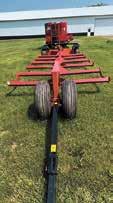



sulting in exposing another roughly 40 feet of pasture ground. Once every one to two hours, someone needs to set a fence post in the ground to support the wire.
“The rst move is at 5:30 a.m., and the boys come out here at 6 a.m. and set the fence,” Scherping said. “That way, when the cows come out, they are ready to graze. Then the system sits idle until 10:45 a.m. when it moves every hour until 2:45 p.m.”
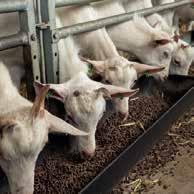
Around 3 p.m. every day, Scherping brings the cows home and sends them back out for a short time after milking. The system moves again during chores and again at 8 and 9 in the evening.
“I bring the cows home every night,” Scherping said. “That’s when I give them hay, silage, haylage and their mineral.”
Scherping has two portable water tanks. One sits in the pasture while the other is in the yard ready to go once the rst one is empty. Each water tank can hold enough water for a 24-hour time frame. The water tank that is in the pasture gets moved during every milking.


“I like to keep them moving enough between eating and drinking that they don’t crowd each other,” Scherping said.
While the system is not always perfect, it has been a helpful tool for Scherping in managing his pastures.

“It saves me a lot of time and keeps the cows moving when they should be moving,” Scherping said.




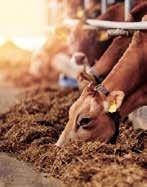
July 31
35 OUTSTANDING, YOUNG, HIGH-PRODUCING COWS coming from Craig Gode with an 80-pound tank average, 3.1% protein, 3.6% butterfat and a somatic cell count of 160,000. Gode, who has been milking since 2010, is relocating and focusing on registered cattle moving forward. Mostly grade Holsteins sell with a few registered Holsteins and Red & White cows. Of the group, 90% are in their first through third lactation and have recently been hoof trimmed. All cows come from A.I. breeding, using many Select Sires bulls. Bulls used include Warrior Red and Altitude Red. This group includes bred cows to BW Marshall and Toy Story. Gode said these cows “are all about milk. The best milking cows are leaving.”



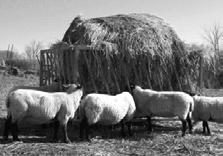

The dairy industry seems to have a lot of optimistic folks that think the tough market situation will turn around by the end of the year. Although that creates hope, there are a lot of issues that have to be dealt with before this can actually happen for both the supply and demand prospects.


International cheese prices improved a little with EU trading near $1.94 and NZ $2.05. U.S. block prices are back into the upper $1.40’s with barrels still trading in the $1.30’s. From a price competitive standpoint, this looks supportive to U.S. exports, but with U.S. cheese prices holding a premium in the further out months
that may not be the case. Starting in November, cash settled cheese futures are trading in the mid to upper $1.80’s. That is the value that a foreign buyer will be offered for shipments into those periods. That is a 40cent premium to the spot cash market and will hinder U.S. cheese price competitiveness for future export sale bookings.
The U.S. dollar has seen a significant 5 basis point drop over the past week. This makes U.S. priced exports 5% cheaper to a buyer with a stable foreign currency. Our number one buyer, Mexico, is becoming a more active value buyer because of this. Nonfat dry milk and whey at the current price of $1.10 and $0.25, respectively should have a good value to foreign buyers especially with a weakening dollar.

I keep wondering how long U.S. butter prices can hold their value. This past week spot butter prices traded into the mid $2.50’s. This compares to EU and NZ $2.12 and $2.23 offers. Typically, it is difficult for U.S. butter to trade at a premium to the EU as buyers chase better values.
Joe Spader



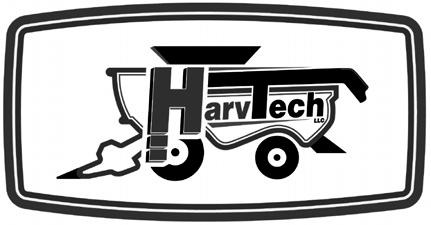

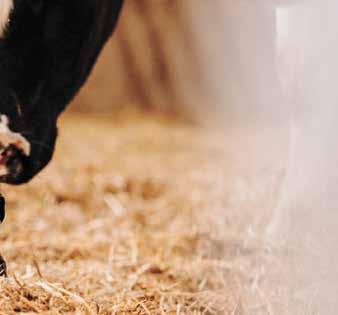


Ft. Atkinson, Iowa • 563-534-7513





July
July





 By Jan Lefebvre jan.l@star-pub.com
By Jan Lefebvre jan.l@star-pub.com
WISHEK, N.D. – Curt Rohweder and his daughter, Denise Rohweder, are busy people. Not only do they operate the last dairy farm in McIntosh County, but Curt raises Thoroughbred horses for racing and Denise trains Doberman pinschers for showing. She also works as a realtor.

“I think we are competitive people,” Denise said.


Seven hundred cows, mostly Holsteins, are milked on their farm twice each day in a double-6 parallel parlor. It has been tted with a GEA automated system that monitors and directs cow movement in and out of the parlor, saving on labor.
“It just keeps loading cows,” Curt said.
Curt’s son, Dave, oversees the farm’s dairy heifers after they are old enough to go on grass or to the lot, and he manages their herd of 350 Angus beef cows. All calves are raised on site, and steer calves are sold when they are 700-800 pounds. The family also raises 2,000 acres of alfalfa and corn.
The milking herd is housed in freestall barns bedded with sand that comes from the Rohweders’ land. This year, the Rohweders transitioned from bull breeding to implementing A.I. They also began using the CowManager system, which has improved overall herd health.
The farm has 25 employees for help in running the dairy, caring for livestock, handling mechanical maintenance and doing eldwork.
“We have a really good crew,” Denise said. “Most of our guys have been here 10 years or more.”
The dairy’s milk is picked up once a day and hauled 60 miles southwest to the Dairy Farmers of America processing plant in Pollock, South Dakota.
Although both Curt and Denise said they enjoy dairy farming, neither chose the profession. It chose them.
Curt owned and ran the Wishek Livestock Auction for over 20 years, beginning in the 1970s. In 1990, a challenge arose when he suddenly found himself with a herd of over 150 dairy cows on his hands.
“I used to lease out dairy cows, and I got a large group
back from one dairy that wasn’t making it, so I needed a place to milk them,” Curt said. “That’s how this all evolved.”
A farm near Wishek that had gone through two different owners since the 1940s was now sitting idle. It had a milking facility with possibilities, so Curt leased the place at rst and then purchased it a few years later. He put his love of a challenge

to good use. His dairy operation began to grow.
“We expanded it from there – added barns, a different parlor,” Curt said. “I had to expand the lagoon and add a larger milk tank. When you start adding cows, everything else is too small.”


He had his son’s help as he expanded, with Dave taking over the beef herd operation at



a separate location. He also had his wife, Sheryl, always in his corner. She recently retired from her career as a registered nurse.
“She is the glue that holds us all together,” Curt said.

However, by the end of the 1990s, Curt needed his daughTurn




Cows walk toward the double-6 parallel parlor July 17 on the Rohweder family’s farm near Wishek, North Dakota. Seven hundred cows are milked twice a day, and the milk is picked up daily by Dairy Farmers of America of Pollock, South Dakota.
ter’s help with his businesses as well.





“I was never going to be involved in dairy, but then I got talked into coming back,” Denise said. “I started working in the (Wishek Livestock Auction) ofce and helping with things around the dairy, but I veered toward the dairy operation. It was something I really enjoyed, and I decided it was really important to me.”
With the dairy farm growing, Curt decided to sell the auction business, but Denise still manages the ofce for the new owner in between helping manage the dairy farm and being a realtor.
“Kind of on a whim about 20 years ago, I decided to get my (real estate) license, and it used to be kind of a parttime thing,” Denise said. “But, in the last couple of years, a lot of people have been migrating out to this area for the peace and quiet, so it’s gotten quite busy. I probably sell as many homes in a month now as I used to in a year.”
However, as real estate has been seeing a bump in sales, dairy farms have continued to decline in the area. The Rohweders have no dairy-farming neighbors.
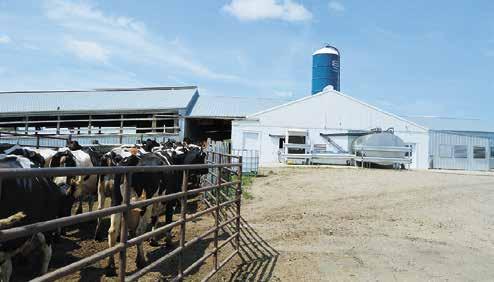
“(The nearest dairy) is about 34 or 35 miles northwest of us in Logan County,” Curt said.





Being remote, though, is one of the things both father and daughter said they like about farming in McIntosh County.

“We don’t have a large population to contend with,” Curt said. “We don’t get many complaints because somebody moved next to us and built a home and doesn’t like the smell of cow manure.”
Denise agreed.
“It’s the peace and quiet (I like),” she said. “We’re miles and miles away from people.”






The location allows space for both father and daughter to nurture their other interests in animals. For Curt, it is horses.
“We are raising Thoroughbred horses that we retain ownership of and send to the racetracks,” Curt said. “I got started in it in 1979 when I got my rst Thoroughbred.”
A friend was raising them, and Curt bought a mare from him with the goal of raising foals from her. The friend also had a stud horse.
“That was going too slow, so I purchased a horse out of a sale in Nebraska, and it won its rst race,” Curt said. “Then I was hooked on horse racing.”








Curt has raised competitive horses through the years. One in the 1980s was a champion at several derbies in Canada and, as a 3-year-old, won both the North Dakota and the Minnesota derbies. When a horse is in running form, it races about every two weeks. Currently, Curt’s horses compete in Shakopee, Minnesota, from May to September. Before that, they race in Nebraska.
“With mares, babies, yearlings, 2-year-olds, stud horses and the running
























horses that are running age, we have about 40,” Curt said.
Meanwhile, Denise has animals of her own. When she came back to Wishek in 2000, she had a Doberman pinscher, but she decided to buy a Weimaraner as well. The breeder talked her into showing it in competition.
“I was hooked,” Denise said. “I ended up meeting one of the top Doberman breeders of all time and got a puppy from her. He was my rst show Doberman. I spent about 15 years learning about the breed and started raising them.”
Occasionally, one of her dogs will be bred to have a litter. She sells the puppies mostly to returning clients. Currently, she has ve Dobermans.
“I’ve been to pretty much every state in the country and in Canada showing Dobermans,” Denise said. “They are the most loyal dog you will nd; they would lay down their life for you in a minute.”
How do Curt and Denise keep so many interests and parts of their businesses going?
“Not much sleep,” Denise said.
With milk prices where they currently sit, both said dairy farming is at one of its most challenging times.
“It’s not for the faint-hearted,” Curt said. “We’d like more stable milk prices than what we have at present. They’ve taken more than a third of our (dairy) income away from what we had a year ago. … We were getting a decent milk price last year, but now it’s below the cost of production, so no new purchases and we’re in survival mode at the moment.”
Denise agreed.
“If we can gure out a way to stabilize prices so that people can gure out a budget and a way to make it work year to year, we wouldn’t be losing all of our dairy farms,” she said.





However, both continue to take on the challenge and keep dairy farming on their diverse list of careers. Denise said she also enjoys promoting the dairy industry in ways that inform people about where their food comes from.
“I’ve just grown to really love it, and it’s something I’m really passionate about,” Denise said. “We have amazing help (on the farm), so it makes everything really easy, and when you enjoy what you do, you don’t think about slowing down.”
Curt has no plan to slow down either.
“I like the challenges of trying to raise feed for the next year for the cows, trying to have a good somatic cell count, getting decent production and having a nice-looking herd of dairy cows,” he said. “I probably would have slowed down a lot already if it wasn’t for the kids working with me, but when you get up in the morning, you’ve got to have a little something to do. Otherwise, it’s a really long day.”

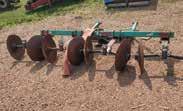 By Tiffany Klaphake tiffany.k@dairystar.com
By Tiffany Klaphake tiffany.k@dairystar.com
LONG PRAIRIE, Minn. – Summer is always a busy time of the year, but for the Wielenberg family, there is one week during the summer that is always the busiest: the week of the Todd County Fair.
The Wielenbergs juggled daily dairy farm duties with that of the annual county fair July 14.
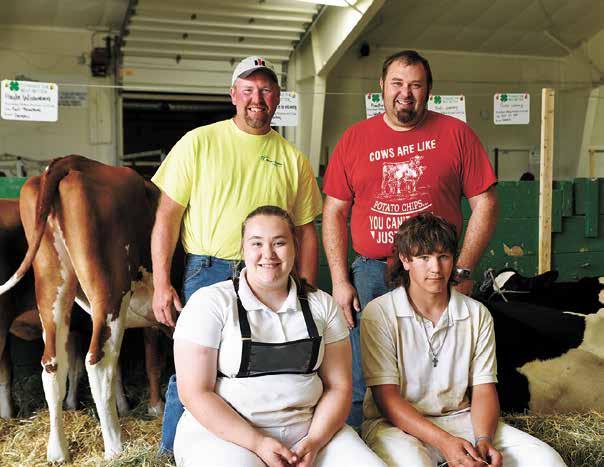
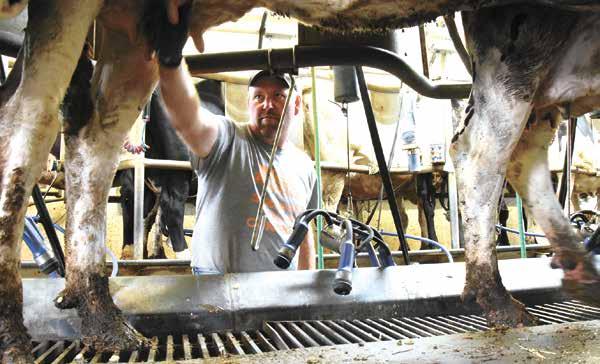
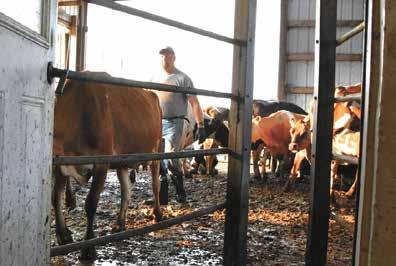


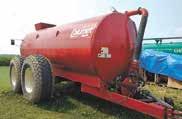

James Wielenberg milks 95 cows in a double-6 herringbone parlor and raises 200 acres of corn and alfalfa at his family’s farm near Long Prairie. He has been farming full time since 2004.

“It’s something I grew up with and something I wanted
to do my entire life,” James said. “I like that you can see what you accomplished in a day.”
That morning of the fair, James stayed home to milk the cows and do morning chores. He started his day at 6 a.m. by feeding the younger animals. By 6:45 a.m., he and part-time hired employee, Shannon Coyer, were milking the colorful herd of 95 Jersey, Holstein, Ayrshire and Milking Shorthorn cows. After milking, James stopped to eat breakfast and then brought in tubs of total mixed ration for the milk cows at the fair.
James’ brother, Mike Wielenberg, helps regularly while maintaining a full-time job. Their mom, Jane Wielenberg, helps when needed and watches the young grandkids of her other son, Neal Wielenberg. Neal also helps with eldwork.


• Patented folding pattern, eliminates the need for adhesives & allows quick and easy application.


• 6.6 mil – 8.0 mil thicknesses available





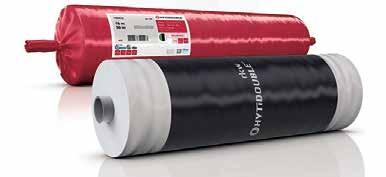
• Reflects sunlight, guaranteed UV stable for 18 months.

• Both layers are completely completely recyclable


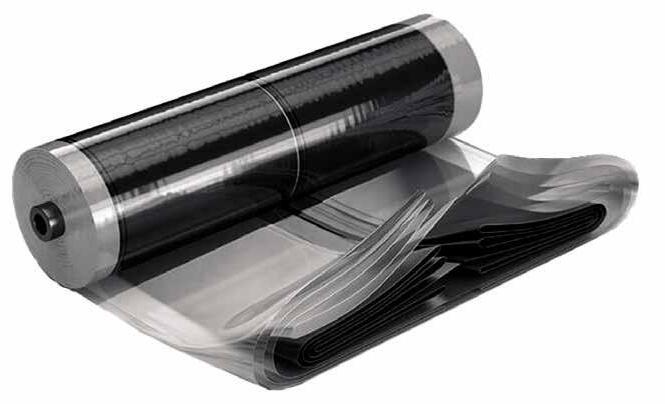
“Thank you for helping when I was gone from the farm.”
- Leon PeplinskiWith over 40 years experience, Wisconsin Silos is the most complete builder of concrete silos in the United States.

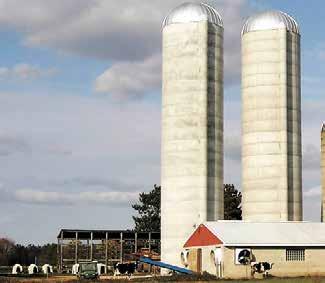
From pouring the footing, to xing the accessories, unloaders, feeders, conveyors, silo pipes, silo distributors & silo chutes.
WE DO IT ALL!
3700 Post Rd., Plover, WI
1-800-472-9202 • 715-570-0069 • wisilos@gmail.com www.wisconsinsilos.com
CLIP AND SAVE
THURSDAY, AUGUST 17, 2023
DAIRY SALE RESULTS FROM June 15, 2023
Mike’s two children, Haylie and Preston, became involved with 4-H at a young age and have been involved ever since.
“I never did 4-H as a kid, but it’s fun seeing them do it,” James said. “It’s nice to see (the cattle) clipped and dolled up.”
Mike also serves on the Todd County Fair board and is on the fairgrounds weeks prior to the fair to get everything set up.
“It gets to be a lot of work,” Mike said. “But, it is such a good feeling seeing everything come together.”
While chores were taken care of at home, Mike, Haylie and Preston arrived at the fairgrounds in Long Prairie at 5 a.m. to start washing, bedding, feeding and prepping their dairy animals to be show ready. The 4-H dairy show started at 9 a.m. July 14 and lasted until 1 p.m.
“There’s been a lot of memories with showing cattle over the years,” Haylie said. “Every year there is something that sticks out.”
Even though Mike and James did not participate in 4-H themselves, they said they enjoy seeing and helping Haylie and Preston with their activities.
“It’s always a pleasure to see them do good in the ring,” Mike said. “They have come a long way from when they rst started.”
This year, Mike served as one of the ring leaders
for the dairy show by helping all the dairy exhibitors line up with their respective classes. James arrived at the fair by 11 a.m. with fresh feed for the milk cows and assisted with juggling animals to and from the show ring.
Haylie and Preston showed eight dairy animals that morning and participated in showmanship. Each one earned a trip to the Minnesota State Fair, Haylie with her 3-year-old Holstein cow and Preston with his market lamb.
That afternoon, Haylie and Preston each exhibited one dairy steer and one sheep in the 4-H general livestock show. The sheep were leased from a neighbor.
The following day, Haylie and Preston planned to show again in the open class dairy show and open class general livestock show.
Once the dairy show was completed, James headed back to the farm. He worked on second-crop hay, but a light rain the night before put that project on hold. Instead, he set out to cut meadow hay for the heifers.


Before long, it was time for James to head back to the yard to begin milking the cows again.
Turn to WIELENBERGS | Page 17
Pipestone Livestock Auction Market, Inc. PIPESTONE, MN
For more information phone: Of ce 507-825-3306 www.pipestonelivestock.com
AVAILABLE IN ONE OR MULTIPLE BAY DESIGN
Height Available: 5’, 8.6’ & 12’ ALSO AVAILABLE:
AL’S
1-800-982-9263
Serving Minnesota, Iowa and Wisconsin Since 1965 www.alsconcreteproducts.com


Con nued from WIELENBERGS | Page 16

Helping on the farm and showing the animals at the fair has helped Haylie in deciding her future plsans of becoming a large animal veterinarian. Preston, who helps his dad and uncle work on equipment at the farm, wants to become a diesel mechanic after high school.
Haylie is also serving as a 2023 Todd County Junior Dairy Ambassador.
“I like making the bonds with the animals,” Haylie said. “Working with them before the fair and being with them in the ring, that is my favorite part.”
Mark Klaphake contributed to this story
Preston Wielenberg shows a Jersey yearling July 14 at the Todd County Fair in Long Prairie, Minnesota. The Wielenbergs have Holstein, Milking Shorthorn, Jersey, Guernsey and crossbred ca le at their farm.
Mike
Preston (from le ), Haylie and Mike Wielenberg get a group of heifers ready to show July 14 at the Todd County Fair in Long Prairie, Minnesota. The Wielenberg family brought 10 dairy animals to the county fair.
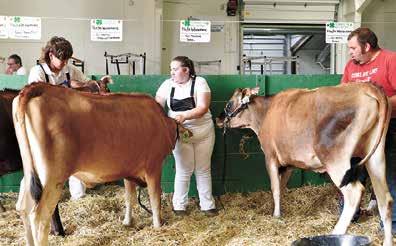

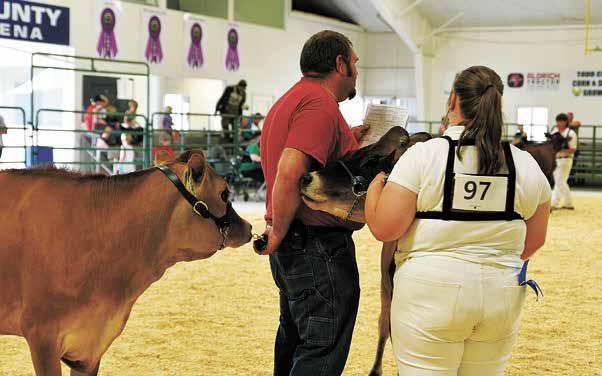



175 cows, 600 acres
The corn looks pretty ugly; it’s all curled up on the sandy ground. It’s trying to push a tassel, but there is not enough moisture there. The third-crop hay is going backwards on the hilltops. We’ve had to spray for alfalfa weevil a couple times this year. For the little rain the crop has had, everything looks pretty good. We’ve been baling a little bit of heifer hay. We will be doing third-crop alfalfa in the next couple weeks. The beef guys around here say their pastures are starting to dry up.

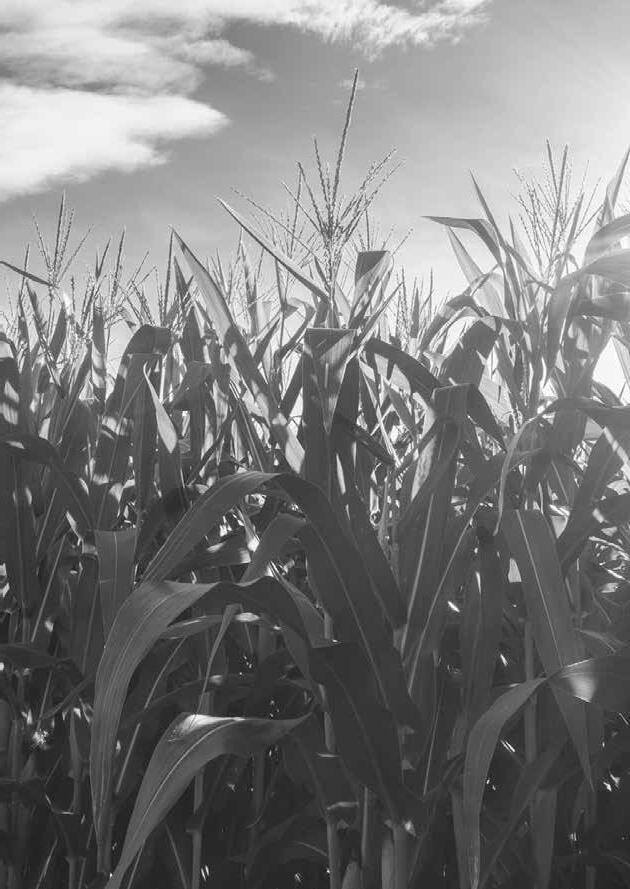


ARIANN DOE
250 cows, 5,530 acres
We are halfway done with first-crop hay. We’ve made close to 1,000 round bales so far. We’ve had a lot of little showers that have slowed us down. We stack most of the hay back here at the farm. We finished spraying corn. My dad has been doing some summer fallow. The oats and durum are heading out, and some are starting to turn. There are some barley fields that are gold that should be harvested soon. Our corn is waist high and taller; the neighbors corn is tasseling.
ALAN VANNURDEN


600 cows, 1,400 acres
We got a little rain, but we need a lot more than that. Near Royalton, some hail stripped some fields. The yields are cutting already. Some corn is tasseled, and some is very uneven. The corn under irrigation is 8- to 9-feet tall. The irrigated hay and the hay in the low spots looks good, but the rest does not. The irrigated thirdcrop hay is probably 12 inches tall, and the nonirrigated is probably 6 inches tall. This summer reminds me of 1988. We are fortunate the corn hybrids are better. The soybeans in the area are starting growing after the rain, but it looks like two different crops in the field.
BENJAMIN SEIFERT
350 cows, 450 acres
We are cutting thirdcutting hay today (July 18). We plan to chop it all and put in on a pile. The neighbors are working on hay as well. We also have been spraying the corn. It’s about waist high. The neighbors corn is mostly tasseled and the soybeans look good. They are mostly canopied. We are getting dry and could use some rain. The lawns are brown, and I’m not sure if the corn on the really sandy hilltops will come around. We are also hoping to get some grass hay done.
DENISE KURTH


40 cows, 250 acres
Our corn had begun to tassel on July 4, and I can now see that it has set ears. The weather hasn’t been too hot, and we received some timely rains, so the pollination should be good. We cut our second crop of alfalfa on July 5 and harvested 80 bales from 60 acres. The pastures and the crops were looking a bit iffy for a while, but we received some nice rains and everything has perked up.
CHARLIE DICKE
200 cows, 850 acres
Our peas are being harvested right now. The corn is short, and I expect that the silage will have less yield. The corn for silage is about to tassel. Our sweet corn is still really uneven. A helicopter is doing fungicide in our area. The soybeans look good, but pastures have not caught up because of the drought. People in our area will be cutting third-crop hay soon. We are going to wait two more weeks for third crop and harvest it for heifers.
Your pulsation simply lets the liner open and close however it chooses. Some cows milk well, other just end up with a bad day kicking at the machine, holding up their milk, or perhaps milking a bit slow in a quarter or two.

TridentPulsation™ drives the liner to a known open and gentle massage closure each and every pulse – no more guessing or getting lucky. Integrated positive pressure with each pulsator ensures consistent operation for all cows every milking. Basically providing the action of a suckling calf – natural & gentle regardless of your vacuum level. Others have you “tuning” your liners like a guitar. You aren’t playing in a band. Consider a pulsation system designed to drive the liner for success, not luck and hoping you stop complaining.
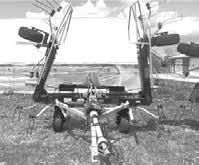
130 cows, 75 acres
Some heavy storms have passed through our area. We received beneficial rain from the storms, but there are some fields in the Hull and Ashton area that suffered substantial wind and hail damage. The rain has enabled the pastures and the lawns to green back up. There are a few reports of grasshopper pressure in the area, but that has affected only a few farmers so far. I haven’t yet seen anyone spraying their soybeans for aphids.
RICH HOUZNER



54 cows, 600 acres
The rain came in four different rainfalls. We are working everything up, and there is still going to be considerable damage to crops due to dry weather. The hay loss is real. We are probably looking at a 50% decrease in yield between the first and second crop. Some places are looking fairly decent in lower ground. The corn is going to be decent. There are some combines rolling in the area; it could be oats and barley. For the most part, people are trying to get hay done in our area.
DOUG FAIRBANKS
380 cows, 600 acres
We chopped our oats to uncover the new seeding. We have third-crop hay down this week for baling. The hay is doing OK in the draught. Anything with grass in it, though, is not worth cutting for a second crop as it is only 6-8 inches tall. The soybeans look pretty good in the area, and the corn planted on time is starting to tassel. Even the later-planted, poor corn is going to make something. We have good dirt, so we can probably take the drought better.
MATT REDETZKE

250 cows, 450 acres
We have had about an inch of rain in the last two weeks, and we are supposed to get more rain today (July 19) and tonight. We missed the hail July 14. We just did our first cutting of our new seeding rye grass, which looks pretty good. We also did the little bit of second-crop acreage we had, and that was all older hay stands and was pretty light. Our corn and soybeans all look really good. The corn has not started to tassel yet, and the soybeans are flowering now. Overall, things look pretty good for the weather we have had.
MITCHELL SCHAEFER
230 cows, 400 acres
It’s been pretty dry. Our pastures are not showing much production. We’ll cut third-crop hay around August 1. With the drought, we’re expecting less third crop than normal. The hay looks fine; it’s just shorter than it should be. Corn is looking pretty decent except for a few places on the hills where it’s curling up. Winter wheat should be ready to harvest by July 25. We’re expecting 80 bushels per acre, but normally we get 100.
TIM VOSBERG
140 cows, 380 acres
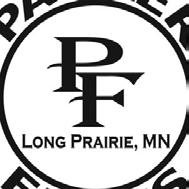

Not a lot of rain, but everything is still going. Conventional corn is tasseling. Our organic corn is fine and will probably tassel next week. I have about 10 acres out of 100 that is poor-looking, but the rest looks OK. Third crop is well underway. There’s not as much there as second crop. We haven’t cut any yet; we will probably cut next weekend. Everybody got over an inch of rain around here recently, but the forecast is dry, so we’re praying for rain. Small grains are being combined. I’ve got some triticale that we took the crop of forage off, and we are going to try to combine it.
RON & COLIN
WUSSOW
100 cows.
1,400 acres
We have had about threequarters of an inch in Cecil, Wisconsin, in the last two weeks. North and south of us they have gotten a little more. The heavier dews we have been having lately have really helped the plants out. We started third crop July 18, and it actually looks OK and should be decent. The corn is still uneven but is starting to tassel. The soybeans are putting on pods. We will probably be starting the wheat the end of this week. Everyone is pretty much just waiting on the rain forecasted for today (July 19) and tonight. For as dry as it has been, things really look decent.
ALAN AINGER
300 cows, 1,100 acres
We finished thirdcrop hay July 17. It was really affected badly by the drought. The quality was OK, but quantity was probably 50% of what a normal third crop is. A lot of people in the area are working on third crop. Our corn surprisingly looks pretty good and is fully tasseled now. We started harvesting wheat July 19.

All Types • Large Inventory Contract Pricing Available SHOP SERVICES
Truck & Trailer Repairs
DOT Inspections Farm Equipment Repairs


rate/ liquid fertilizer)
Land Rolling
Baling: Cutting, Raking, Stacking
Harvesting, Yield Mapping & Data Collection



Farm-Rite Equipment, Inc.



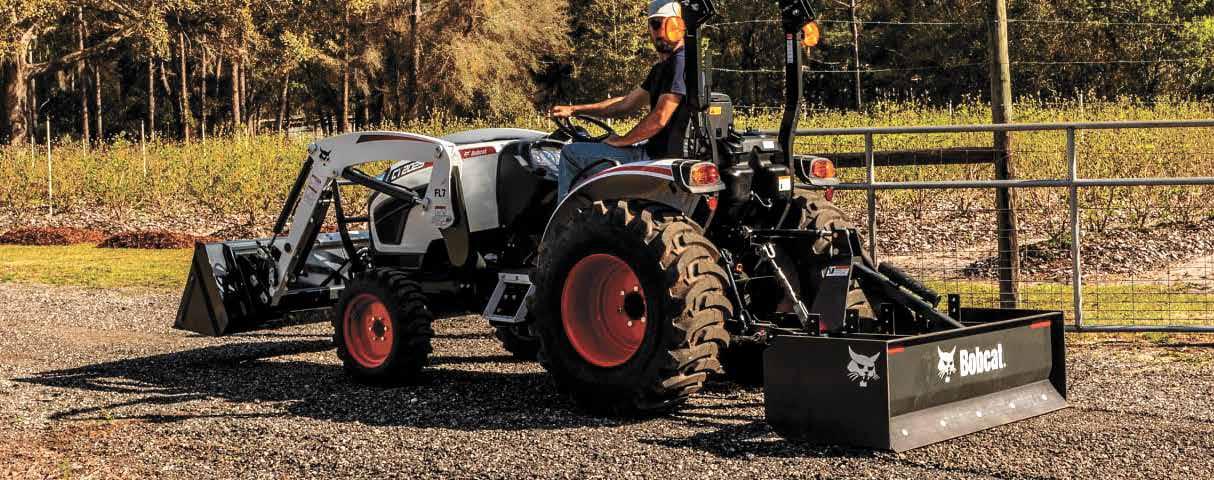
Dassel • 320-275-2737
Long Prairie • 320-732-3715 St. Cloud • 320-240-2085
Willmar • 320-235-3672

Lano Equipment of Norwood

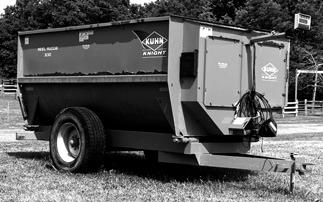
Norwood Young America 952-467-2181
WISCONSIN

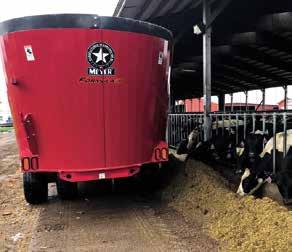


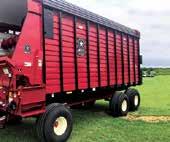
Hay sales starts at 12:30 p.m. and are the 1st and 3rd Thursdays of the months of September through May. Aug. 3, 2023 • Sept. 7, 2023



For more information, contact Kevin Winter 320-352-3803, (c) 320-760-1593 or Al Wessel at 320-547-2206, (c) 320-760-2979










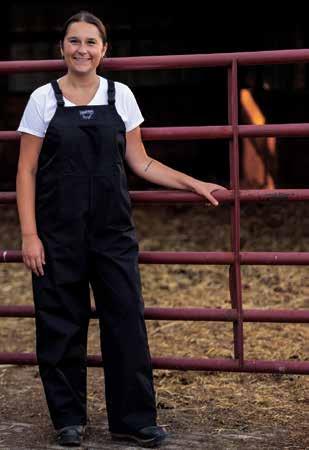










From the kitchen of Sandy Keller of Mt. Horeb, Wisconsin
1/2 cup butter
1 cup sugar
3 bananas
2 eggs
2 cups flour
1 teaspoon baking soda
Cream the butter and sugar. Blend in bananas and eggs. Add flour and baking soda. Blend together. Pour into greased bread pans. Bake 30 to 40 minutes at 350 degrees.
From the kitchen of Sandy Keller of Mt. Horeb, Wisconsin
1 egg
3/4 cup milk
1 cup (4 ounces) shredded cheddar cheese
1/2 cup quick-cooking oats
1/2 cup chopped onion
1 teaspoon salt
1 pound lean ground beef
2/3 cup ketchup
1/2 cup packed brown sugar
1 1/2 teaspoons prepared mustard
In bowl, beat the egg and milk. Stir in cheese, oats, onion and salt. Add beef and mix well. Shape into eight loaves. Place in a greased 9-by-13 baking dish that is 2 inches deep. Combine ketchup, brown sugar and mustard; spoon over loaves. Bake uncovered at 350 degrees for 45 minutes or until meat is no longer pink and a meat thermometer reads 160 degrees.
From the kitchen of Sandy Keller of Mt. Horeb, Wisconsin

2 cans (13.8-ounce) refrigerated pizza dough
1 cup pizza sauce
1 package (8-ounce) mozzarella cheese
40 slices of pepperoni
Heat oven to 400 degrees. Spray 10-by-15 pan and sides with cooking spray. Unroll both cans of dough and fit crosswise in pan. Press in bottom and up sides. Press middle seam to seal. Bake 8 minutes. Remove from oven. Spread pizza sauce over partially baked crust. Sprinkle with 1 1/2 cups cheese. Top with pepperoni. Sprinkle with remaining 1/2 cup cheese. Bake 8 to 12 minutes or until crust is golden brown and cheese is melted and bubbly. Let stand 5 minutes. Cut in squares.

ATTENTION FARMERS...
Are rocks, re-rod or holes showing in your bunker silo?

WE CAN RESTORE YOUR BUNKER TO LIKE NEW CONDITION!
BUNKER SILO RESTORATION/ REPAIR WITH JETCRETE

Approximately 1” of steel reinforced material added to bunker walls.
• High pressure water blasting of walls for excellent bonding.
• 6 gage heavy duty wire mesh installed
• Jetcrete -phnuematically applied concrete.
SILO RELINING WITH “JETCRETE” BARN WALL & BASEMENT RESTORATION WITH “JETCRETE” (Limestone, rock, block & concrete wall)
SERVING IA, MN, WI, IL AND SD

CONTACT: 800-866-7327

Your Mixer, Spreader, Hay Processor Headquarters We carry:



Dana Berreau
507-879-3593 / 800-821-7092
Box 116, Lake Wilson, MN 56151
All special auctions are on CattleUSA.



Tuesday, July 25, 2023
EXPECTING 700-800 HEAD!
SPECIAL DAIRY HEIFER AUCTION
Tuesday, July 25, 2023 at 11:00 am
Expecting 400-500 head!
CALL WITH YOUR CONSIGNMENTS
CATTLE AUCTION
Wednesday, July 26, 2023 at 11:00 am
COMPLETE RETIREMENT HERD DISPERSAL RETIREMENT HERD

40 Holstein Dairy Cows, milked in stanchions, outside everyday, home grown feed, not pushed, no TMR, avg. 62# with cows milking 82-100# scc 200. Exceptional genetics with AI bred over 60 years through Genex. Bred Angus. Majority are recent fresh with 7 dry springing cows. Good feet, legs and udders. Vaccination program. Many very nice quality dairy cows in this herd! Coming from Peter J and Kathy Schommer, River Falls, WI COMPLETE HERD DISPERSAL #2
35 High Quality Holstein Dairy Cows. Tie stall milked, cows will sell on test, averaging 80# 4.1P 3.1P 125scc. Majority AI sired, all bred Angus. Full vaccination program. All stages of lactation. Herd includes (5)VERY FANCY springing heifers! No blemished cows will be sold in this herd dispersal. Coming from Cletus and Melonie Hoover, Thorp, WI
REPUTATION CONSIGNORS
20 Fresh Holstein Dairy Cows, 2 & 3 year olds, parlor/freestall, from an excellent herd with RHA of 30,000# cows milking 85-135# This consignor has topped the sale many times, reputation consignor. Coming from Triple D Dairy, Clintonville, WI 17 Registered Holstein Dairy Cows, fresh 2&3 yr. olds, parlor/ freestall, vaccination program, out of a 29,000# RHA. Coming from Schmidt Dairy, MN
Always a great selection of dairy cattle at Premier Livestock and Auctions! DRIVE-INS ARE ALWAYS WELCOME! PLEASE HAVE IN BY 10:30 AM
Wednesday, August 2, 2023 at 11:00 am
MACHINERY AUCTION
Friday August 25, 2023
CALL WITH YOUR CONSIGNMENTS. Any questions please call Curt 715-308-9 0

Weekly Highlights at Premier
Another extremely busy week at Premier Livestock, selling over 4,000 head! Tuesday special feeder cattle auction selling 815 head. FANCY beef feeder steers/heifers mostly $175-265 per # with fancy light weights $270-310 per #. Most classes Holstein feeder steers sold $140-188 per # with light weights up to $225. Bred beef cows topped at $2,100. Cow/calf pairs topped at $3,200. Beef breeding bulls up to $2,300. Wednesday Dairy Cattle Auction, 318 head sold with 2 herd dispersals. Quality was excellent. Top fresh cows $2,000-2,600, with over 90 cows selling in that range! Other decent quality cows, $1,5001,975. Top springing heifers, $1,600-2,250. Thank you for your business! We appreciate all of our consignors, buyers, and livestock truckers.
Scan the code for a direct link to our website!

Mowers Mergers
Rotary Rakes
The best quality feed needs the best quality mix. Penta TMR Mixers are designed, tested and farm proven to deliver the best mix on the market. Our Hurricane Auger allows forage to circulate faster through the mix for quicker processing and mixing times.


The Penta (Hagedorn) line of Manure Spreaders allows you to make the best use of your organic nutrient resources. The Hagedorn Spreaders processes the manure finer with the best spread pattern. This lets your field make better use of this rich resource.
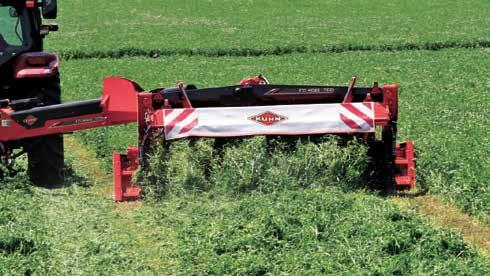


Dsl, C/H/A, 2 Spd,14 Pin, 305 hrs.
‘21 Mustang 1500R, H/F Ctrls, Dsl,1600 Lift Cap, C & H, 2,540 hrs, New Rims, Tires And Bucket, Warranty Expires At 3000 Hours Or 2/1/2023 ...........$32,500

‘17 Gehl RT250, ISO/Dual H-Ctrls, Dsl, Camso Tracks HXD 450x86x58, Both Standard And Hi-Flow Hyd, 2 Spd, Hydra Glide, 295 hrs, Warranty Till 6-30-26 Or 1000 Hrs ...................................$48,500

Ctrls,
Gehl R165, H/Ft Ctrls, Dsl, 1750 Lift
‘16
‘17 Gehl R220, H-Ctrl, Dsl, 2500 Lift Cap, C&H, 2 Spd, 2660 hrs .......$33,500
‘15 Gehl R220 T-Bar Ctrls, New 72HP

Yanmar Dsl Eng, 2500 Lift Cap, C&H, 2 spd, 4025 hrs ...............$37,000

‘22 Gehl R220 T-Bar H-Ctrls, 2500 Lift Cap, C&H, 2 spd, 3890 hrs .......$38,800
Gehl 4840, T-Bar Ctrls, Dsl, 1750 Lift Cap, No Door, Side Windows, Heat, 2 Spd, 4,450 hrs ..................................$19,500
‘17 Case SV340, ISO/H Pattern
Switchable Ctros, Dsl, 3406 Lift Cap, Aux
24.2 GPM, C/H/A, 2 Spd, 630 hrs $51,500
‘19 Manitou 2200R, ISO Ctrls, 72HP Dsl, 2200 Lift Cap, C/H/A, 2 Spd, 50 hrs. ......................................$57,500
MANURE
HANDLING
Kuhn Knight PS150, 500 Bu Vert Beaters, New Apron Chains, New Beater





Teeth ..........................................$35,500
Kuhn Knight SLC141, 4100 Gal ...$47,000
‘19 Hagedorn Hydra-Spread Extravert

5440, 540 Bu, Vert Beater, Hyd Push, Endgate, 4’ Rock Guard .............$46,000
‘14 Kuhn Knight 8124, 425/65-R22.5
Tires, 2400 gals .........................$13,900
‘19 Artex SBX800, 800 Cu Ft, Guillotine


Endgate, 88C Apron Chain, Vert Beater ................................ $57,700
Jamesway Vacu-Pump, 6” Transfer Pump, 11L-15 Tires, 540 PTO......$3,400
Houle 13, 1 3/8, 1000PTO, 13’ Depth .....................................$4,900
‘09 Kuhn Knight 8132, 425 Truck

Tires, 3200 Gals .........................$25,500
Kuhn Knight 8132, Flotation Tires, 3200 Gal ....................................$16,250

‘12 NH Duratank 3400S, 49x19.0-20




Tires, 3400 Gal ...........................$16,500
‘19 McHale V6750, 4x5.5’ bales, surface wrap, auto wrap, bale kicker, cutter rotor, 900 bales ..................$49,500
‘11 Balzer
V6, 6’ Pump, 1 3/8 1000 PTO .....................................$5,500
USED TMRS/MIXERS
3650, 650 Cu. Ft., RH Flip Down Conveyor..........................$15,500 ‘15 SAC 6160 Turbo Max, 600 CuFt, Turbo Paddle Reel, 4 Auger Power Discharge ...................................$27,500 ‘15 Penta 4130, 450 Cubic Feet, 3’ Right Hand Conveyor .............$19,500 ‘12 Penta 6720HD, 540PTO, 670 CuFt, Flat Conveyor ...............$9,500 ‘22 Meyer F700, 693 Cu Ft, 36” LH
Kuhn Knight RA136, 360 Cu Ft, EZ2810 Scale Head, Helix Reel, Slide Tray Discharge ...................................$29,500 Supreme Intl 500, Duals, 394 Cu Ft Struck, 2’ RH Dog Leg Conveyor, 3PT Digital Scale, Selling As Is............$3,500
NH Roll-Belt 560, 2800 bales ........$34,000
‘89 NH 311, Model 170 Thrower, Small Square Baler ..................................$6,500
JD 535, 5’ X 6’ Bales, Net Wrap .......$6,900
3 Point Wheel Rake ...........................$900
‘16 H&S BW1000, 11Lx15 Tires, 6’ Bales, 13,500 Bales On Counter .. $24,900
Tubeline TL1700SR, Square Bale 3’x3’
NEW Penta Dump Box Sizes 40, 50, 60 Kuhn Disc Mowers - Models GMD240 and GMD280 Available ‘20 Gehl
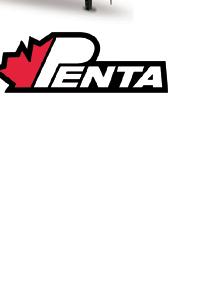

Up to 7’ Long, Rd Bale 4’x4’ To 5’x6’, Twin Bale Wrap Stretchers ...........$28,500
‘20 Tubeline Bale Boss I 3820, Square Bale Processor, 3 x 3 x 8 Bales ....$13,000
‘20 Kuhn Primor 4270M Bale Processor ...................................$24,000
Hiniker 4000 15’ Stalk Chopper, 1 3/8 1000PTO ...............................$5,500

Oliver 550, 2 WD, 46 HP ..................$4,900
Mahindra EMAX 20S HST, 20HP
Bobcat Grapple, 72” Dual Root ......$4,500 Erskine 901777, 24” Diameter Whl, 32 Teeth, Bidirectional Cutting, Extra Hood ....................................$4,500
Dsl,
4WD, Hydro, 198 hrs, King Kutter And 48” Tiller Included .......$14,700
‘20 Kioti K9 2400, CVT Dsl, Canopy, Hyd Dump, Frt & Rear Windshield, 72 hrs, 245 miles .....................................$16,900 ‘18 X-ON C5-CH831825, 18’ ft Trailer ............................................$3,500 Woods M5-4, 5’ Width, 3 point mount, Single Tail Wheel................$1,250 Cabelas RC2072 Slip Clutch, 3 pt mt, 6’ Width, Frt & Rear Chains, Single Tail Wheel, Made By Woods .............................$2,900 Extreme 69” Brush Cutter, 11-20GMP .....................................$3,250
Virnig Pallet Forks .............................$650
‘18 Grouser Tracks, 18 Pads, Fits JD 320G or Loader with a 44.2” Whl base, All new bushings and pins ..........................$2,300 Grouser 12” Tracks, Fits Cat 246B ..................................$1,200 Tracks, Fits 2054, 10x16.5 Tires, Has Rubber Pads ..........................$ 1,000 Westendorf 4300, Brush Cutter ...................................$1,200
JBM Bale Trailer, 8 bales ................$3,700

Black Max, 22” Blower fan, 76” Width, Hyd Drive with Skid Mts, 21-25 GPM Hyd Requirement ....................................$3,800
TMG Industrial RT120, 540 PTO, 48”, 3 Pt .........................................$2,800 Farm King F1663G, 74”, 3 pt, Hyd Rotation ..................................$3,000